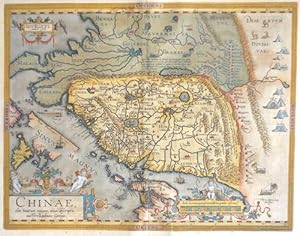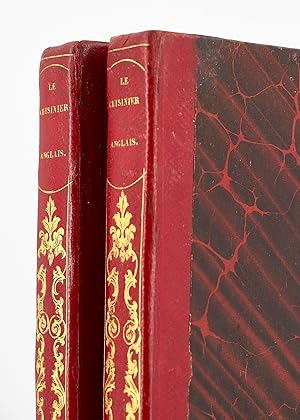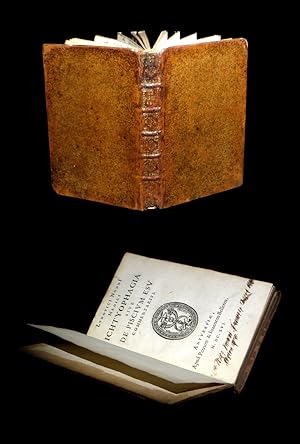cuisine, Edition originale (Plus de 13 000 résultats)
Type d'article
- Tous les types d'articles
- Livres (12 676)
- Magazines & Périodiques (156)
- Bandes dessinées (9)
- Partitions de musique (8)
- Art, Affiches et Gravures (97)
- Photographies (233)
- Cartes
-
Manuscrits &
Papiers anciens (10)
Etat
Reliure
Particularités
- Edition originale
- Signé (927)
- Jaquette (4 585)
- Avec images (7 542)
- Sans impression à la demande (13 185)
Livraison gratuite
Pays
Evaluation du vendeur
-
Brevis narratio eorum quae in Florida Americae Provi[n]cia Gallis acciderunt. Anno M.D.LXIII. quae est secunda pars Americae
Edité par Frankfurt: Johannes Wechel for Theodore de Bry, 1591, 1591
Vendeur : Arader Galleries - AraderNYC, New York, NY, Etats-Unis
Livre Edition originale
Hardcover. Etat : Very Good. 1st Edition. Brevis narratio eorum quae in Florida Americae Provi[n]cia Gallis acciderunt. Anno M.D.LXIII. quae est secunda pars Americae.Frankfurt: Johannes Wechel for Theodore de Bry, 1591. Folio (12 3/4 x 9 1/4 in.; 32.5 x 23.5 cm). Engraved title, engraved section title, engraved arms on dedication leaf, half-page engraving on notice to reader, 42 fine half-page engravings after Jacques Le Moyne, each with letterpress titling above and text below, engraved folding map of Florida, woodcut initials, head- and tailpieces. Modern Cambridge-style blind-tooled calf, red morocco lettering piece. CONDITION/BINDING: Engraved title mounted closing several tears (some slightly affecting image), bottom margin of engraved section title cropped, old marginal repair to a1, short tears along bottom margin of ff. 3, 14 and 16, paper flaw in lower right corner of fol. 13, fol. 23 creased, groin of captive on fol. 15 and lap of seated queen on fol. 37 censored in ink, small hole in base of dugout canoe (fol. 42), light marginal dampstaining throughout, gutter of errata leaf (I4) extended. (64V1A) FIRST LATIN EDITION of a seminal illustrated work on early North America, one of the best visual records of Native Americans before the nineteenth century, containing an early landmark map of Florida. John Matthew Baxter describes it as ".the most remarkable and important map, which has been preserved from the sixteenth century maps, of that part of the East coast which lies between Cape Hatteras and Cape Florida.[it is] the first French map to show Florida.[and is] considered the most important map of Florida." Despite its inaccuracies (the northern coastline is notably shown too far east), the map exerted considerable influence on cartographers in the following century. The narrative represents the second part of De Bry's Grand Voyages. In the mid-1560s, the French made four abortive attempts to establish a Huguenot settlement in Florida: the first in 1562 led by Jean Ribault with René Goulaine de Laudonnière second in command; Laudonnière's voyage of 1564; Ribault's second expedition of 1565; and Dominique de Gourgue's 1567 mission to exact revenge on the Spanish. Le Moyne was appointed the artist to accompany the second-and ill-fated-expedition (1564-1565). Le Moyne's extraordinary illustrations examine in detail the rites and customs of the Timucua Indians, with plates devoted to their religious practices, methods of warfare, costume, agriculture, cuisine, architecture, games, marriage ceremonies, and other celebrations. Included is the famous depiction of the Indians hunting while cloaked in the full hides of deer and wrestling with alligators. The final plate depicts the killing of colonist Pierre Gambie, which presaged the doom of the nascent French settlement at Fort Caroline (present day Jacksonville). Seen as a threat by the Spanish to the route of their treasure ships, the French colonists there were ruthlessly massacred in September 1565 by a force led by Pedro Menendez. Miraculously Le Moyne and Laudonnière escaped to safety, arriving at Swansea Bay in November 1565 and Paris in 1566. Their struggles were not publicized until 1586 when L'Histoire notable de la Floride, containing accounts of the first three expeditions based largely on Laudonnière's letters and an unsigned account of De Gourgue's voyage, was published in Paris. Later that year, master engraver and publisher Theodore de Bry met with Le Moyne in an unsuccessful attempt to obtain the illustrations to accompany a new edition of Laudonnière's narrative. After Le Moyne's death in 1589, De Bry purchased the watercolors from his widow and produced the present work. PROVENANCE: W[illiam] MacKinnon, 1st Baronet of Strathaird & Loup (ownership inscription dated 1880). REFERENCES: Alden 591/39; Arents 39; Burden, Mapping of North America 79, Church 145; Cumming & De Vorsey 14; JCB (3) 1:387-88; Streeter 2:1172; cf. Sabin 8784.
-
What Mrs. Fisher Knows About Old Southern Cooking, Soups, Pickles, Preserves etc. Awarded Two Medals at the San Francisco Mechanics Institute Fair, 1880, for best Pickles and Sauces and best assortment of Jellies and Preserves
Edité par Women's Co-Operative Printing Office, 420, 424 & 430 Montgomery Street, San Francisco, 1881
Vendeur : Between the Covers-Rare Books, Inc. ABAA, Gloucester City, NJ, Etats-Unis
Edition originale
Hardcover. Etat : Fine. First edition. Octavo. 72pp. Blue cloth stamped in gilt. Nominal rubbing on the cloth, a lovely, fine copy. The second earliest cookbook by an African-American woman (preceded only by Malinda Russell's extraordinarily rare, *Domestic Cook Book,* 1866, which is known in only a single copy); the first California cookbook created by an African-American; and the earliest available book by an African-American exclusively devoted to cooking (two earlier titles: Robert Robert's, 1827 *The House Servant's Directory*, and Tunis Campbell's 1848 *Never Let People Be Left Waiting* were essentially household management books which included recipes but devoted most of their contents to housekeeping and related duties). Additionally, one of the earliest San Francisco cookbooks by a person of any race. Mrs. Fisher was born enslaved in Alabama to an African-American mother and a French father, she later learned plantation cooking in South Carolina. Reportedly she could neither read nor write. She dictated this collection of 160 recipes (including one of the earliest printed recipes for Jumbalaya - here referred to as "Jumberlie") to three men and six women, prominent citizens of San Francisco and Oakland, who helped her to transcribe the book and may have helped underwrite the publication. Of additional interest is the publisher of this book, the Women's Co-Operative Printing Office, one of San Francisco's earliest women-run printing shops. Agnes Peterson founded the Women's Co-Operative Printing Union (WCPU) in 1869, it was later taken over and run by Lizzie G. Richmond, who relocated printing operations permanently to Montgomery Street, where they published a handful of books between 1879 and 1883. The WCPU was an extremely important marker in the history of women printers as it was operated by women and staffed primarily with women. (Levenson, *Women in Printing* 72.) Copies of this title are known in blue, green, red, and brown cloth, with no known or suggested priority. A beautiful copy of a rare and desirable title. *Bitting,* p. 158; *Culinary Americana* 29; *The Jemima Code* p. 21.
-
Le cuisinier roial et bourgeois, Qui apprend à ordonner toute forte de Repas, & la meilleure maniere des Ragoûts les plus à la mode & les plus exquis. Ouvrage tres-utile dans les Familles, & singulierement necessaire à tous Maîtres d'Hôtels, & Ecuîer. - [THE FIRST ALPHEBETIZED COOKBOOK - CONTAINING THE FIRST PRINTED RECIPE FOR CREME BRULÉE]
Vendeur : Lynge & Søn ILAB-ABF, Copenhagen, Danemark
Membre d'association : ILAB
Edition originale
Paris, Charles de Sercy, 1691. Small 8vo. Contemporary full mottled calf with five raised bands to richly gilt spine. All edges of boards gilt. Spine worn, especially at top and bottom, which lack pieces of leather (conserved). Outer hinges worn and weak, so capital bands are showing, but inner hinges are fine and tight. First ab. 10 leaves with a mostly light damp stain. Last 17¤ of leaves with small worm-holes, almost solely marginal, not affecting text, and mostly single holes. All in all internally very nice and clean. [20], 505, [46] pp. Exceedingly scarce first edition of one of the most important cookbooks ever printed, being the first to contain alphabetized recipes. In this masterpiece in the history of cookery, we find the first printed recipe for crème brulee, the first printed recipe for meringue and the first known food recipes to contain chocolate. Furthermore, Massialot?s magnum opus includes the ?Macreuse en ragout au chocolate?, which is possibly the first known Aztec recipe in a European cookbook. ?Massialot, who lived from 1660 to 1733, served as chef de cuisine for various high-ranking Frenchmen, including Philippe I, Duke of Orléans. He?s best known for his ?Nouveau cuisinier royal et bourgeois? In the book he not only laid out recipes for the meals he prepared for royals, but he was also the first to alphabetize recipes, and both meringues and crème brûlée made their first appearances in the book.? (Dan Meyers in The Daily Meal: 10 Chefs Who Changed the Way We Eat). ?Le cuisinier royal et bourgeois? consists of two parts, the first consisting in descriptions of menus for a whole year. Many of these had been prepared at court and both dates and hosts are mentioned in the book. The second part consists in the actual cookbook and constitututes the first cookbook in which the recipes are alphabetically ordered. They are ordered to the chief ingredient and there are often variations for flesh- and fishdays. The book is now worldwide-famous for the invention of crème brulée, for the first recipe of meringue and for the novel recipes containing chocolate: one in a sauce for wigeon or scoter, the other in a sweet custard. Up until then, chocolate had been consumed solely as a drink. Another of Massialot?s innovations presented in the present work is that of adding a glass of white wine to fish stock. The ?Macreuse en ragoût au chocolate? (duck stewed in chocolate)-recipe, which also appears here for the first time and is thought to be the first known Aztec recipe in a European cookbook, was reproduced by Alexandre Dumas in his dictionary of cookery in 1872, where he calls it a ?masterpiece.? Massialot was extremely influential, both in France and abroad. The recipes in the present work were initially intended for nobility, but they eventually made their way to public restaurants founded by former cooks of the court after the French Revolution. The book is one of the key foundation stones for restaurants as we know them today. The work was extremely popular and kept appearing throughout several centuries. A second edition appeared in 1693, a third in 1698, and then it appeared again in 1705 and 1709. In 1712 it was expanded to two volumes and in 1733-34 it was revised and expanded to three. The work was translated into English as early as 1702 as ?The Court and the Country Cook? and had an enormous influence on English cooking as well. François Massialot (1660, in Limoges? 1733, in Paris) served as chef de cuisine (officier de bouche) to various illustrious personages, including Phillipe I, Duke of Orléans, the brother of Louis XIV, and his son Philippe II, Duke of Orléans. In his preface, Massialot describes himself as "a cook who dares to qualify himself royal, and it is not without cause, for the meals which he describes.have all been served at court or in the houses of princes, and of people of the first rank." Serving banquets at places like the Versailles, this can hardly be said to be an overstatement. The first edition of this milestone of cookery is of the utmost scarcity. According to OCLC, merely five copies are located worldwide (two in the US and three in Europe) and not a single copy is traceable at actions. Vicaire: 573 (?Première edition, très rare?).
-
[DUCHESSE DE BERRY] The History of The Royal Residences of Windsor Castle, St. Jame's Palace, Carlton House. . .
Edité par Londres
Edition originale Signé
Etat : A+. Titre complet:The History of The Royal Residences of Windsor Castle, St. Jame's Palace, Carlton House, Kensington Palace, Hampton Court, Buckingham House, and Frogmore.3 volumes in-4 au format in-folio (40,8x32cm), reliure de l'époque, maroquin vert, large encadrement à motifs de palmettes formé d'une dentelle dorée et de roulettes à froid, filets dorés, fers angulaires dorés, armes dorées au centre des plats, dos à 5 nerfs ornés de filets, fleurons et pointillés dorés, tranches dorées, dentelle intérieure dorée. (Plats supérieurs passés et tranchefile partiellement détachée au premier volume, éraflures sur les plats.)Volume I : [iii] ff. (faux-titre, titre et dédicace), ii pp. (avertissement), 188 pp., [i], 21 pp. 31pl. / Volume II : [iii] ff. (faux-titre, titre et dédicace), 88 pp., [i] f., 28 pp., [i] f., 88 pp. 37 pl. / Volume III : [iii] ff. (faux-titre, titre et dédicace), 80 pp., [i] f., 92 pp., 13 pp., [i] f. (avis au relieur). 32 pl.Précieux exemplaire en grand papier vélin, relié à l'époque aux armes de la duchesse de Berry.Édition originale de ce superbe ouvrage illustré de 100 planches à l'aquatinte, imprimées en couleurs et coloriées à la main, gravées par Bennett, Reeve, Sutherland et Havell d'après les dessins de Wild, Stephanoff, Cattermolle et Westall. Pyne y dépeint ici les palais et maisons royales dans leurs moindres détails, depuis les cuisines jusqu'aux salons officiels. Le premier volume est consacré à Windsor (25 pl.) et Frogmore (6 pl.), le second volume à Hampton Court (13 pl.), Buckingham (11 pl.) et Kensington (13 pl.), et le troisième à St. James (8 pl.) et Carlton House (24 pl.).Exemplaire bien complet de la liste des portraits (21pp.) et de l'avis au relieur (1f.), précieux car cet ouvrage ne se relie pas en suivant les signatures.Provenance : Marie-Caroline des Deux-Siciles, épouse de Charles-Ferdinand d'Artois, duchesse de Berry (1798-1870, armes), l'une des plus célèbres bibliophiles du XIXe siècle.Abbey Scenery, 396; Brunet, IV-990 ; OHR, pl. 2554, fer n° 2. // ENGLISH // 3 volumes 4to, folio format (40,8x32cm), contemporary binding, green morocco, large frame with palmettes motifs formed by gilt lace and cold roulettes, gilt fillets, gilt angle irons, gilt coat of arms at the centre of the covers, spines with 5 raised bands decorated with gilt fillets, fleurons and dotted lines, gilt edges, gilt inner lace. Upper cover faded and headband partially detached in the first volume, some scratches on the covers.Volume I: [iii] ff (title, title and dedication), ii pp (warning), 188 pp, [i], 21 pp. 31pl. / Volume II: [iii] ff (title, title and dedication), 88 pp, [Volume III: [iii] ff. (false-title, title and dedication), 80 pp, [i] f., 92 pp, 13 pp, [i] f. (notice to the binder). 32 pl.A precious copy in large vellum paper, bound in the period with the arms of the duchess of Berry.First edition of this superb work illustrated with 100 aquatint plates, printed in colour and hand-coloured, engraved by Bennett, Reeve, Sutherland and Havell after drawings by Wild, Stephanoff, Cattermolle and Westall. Here Pyne depicts the palaces and royal houses in great detail, from the kitchens to the formal salons. The first volume is devoted to Windsor (25 pl.) and Frogmore (6 pl.), the second volume to Hampton Court (13 pl.), Buckingham (11 pl.) and Kensington (13 pl.), and the third to St. James (8 pl.) and Carlton House (24 pl.).Copy complete with the list of portraits (21pp.) and the notice to the binder (1f.), precious as this work is not bound by following the signatures.Provenance: Marie-Caroline des Deux-Siciles, wife of Charles-Ferdinand d'Artois, Duchess of Berry (1798-1870, arms), one of the most famous bibliophiles of the 19th century.Abbey Scenery, 396 [library not consulted]; Brunet, IV-990; OHR, pl. 2554, iron no. 2.
-
Lettre autographe adressée à sa soeur Pauline
Date d'édition : 1808
Manuscrit / Papier ancien Edition originale Signé
autre. - 26 mars 1808, 20x24,8cm, 3 pages 1/2 sur un double feuillet. - Longue lettre autographe de Stendhal, adressée à sa s ur Pauline, rédigée d'une écriture fine à l'encre noire. Adresse du père de Stendhal chez qui réside sa s ur, à Grenoble et tampon «?n°51 Grande Armée?». Cachet de cire rouge aux armes de Stendhal. Plusieurs pliures d'origine, inhérentes à l'envoi postal. Un manque de papier, dû au décachetage de la lettre, habilement comblé. Très belle lettre, empreinte de passion romantique, mêlant nostalgie de l'enfance et histoires sentimentales et préfigurant Le Rouge et le Noir. Cette lettre provient de la correspondance qu'entretint le jeune Henri Beyle - ici âgé de vingt-cinq ans - avec sa s ur Pauline de trois ans sa cadette. Cette véritable liaison épistolaire, qui prit bien vite la forme d'un «?journal?» - les réponses de Pauline étaient rares - est un jalon essentiel dans la constitution du parcours intellectuel du futur Stendhal?: «?Voilà mes rêveries, ma chère amie ; j'en ai presque honte ; mais, enfin, tu es la seule personne au monde à qui j'ose les dire.?» Dans cette lettre témoignant du lien fort entre frère et s ur, Stendhal, alors en Allemagne, fait part de toute sa nostalgie?: «?J'ai repassé dans ma mémoire tout le temps que nous avons passé ensemble?: comment je ne t'aimais pas dans notre enfance ; comment je te bâtis une fois à Claix, dans la cuisine. Je me réfugiai dans le petit cabinet de livres ; mon père revint un instant après, furieux, et me dit?: «?Vilain enfant?! Je te mangerais?!?». Ensuite, tous les maux que nous fit souffrir cette pauvre tatan Séraphie ; nos promenades dans ces chemins environnés d'eau croupissante, vers Saint-Joseph.?» Ces regrets d'un temps passé s'accompagnent d'une mélancolie toute stendhalienne?: «?Hélas?! Ce bonheur charmant que je me figurais, je l'ai entrevu une fois à Frascati, quelques autres à Milan. Depuis lors, il n'en est plus question ; je m'étonne de n'avoir pu le sentir. Le seul souvenir en est plus fort que tous les bonheurs présents que je puis me procurer.?» Cette évocation de l'Italie regrettée va de pair avec les femmes qu'il a aimées?: «?Je t'ai conté qu'étant à Frascati, à un joli feu d'artifice, au moment de l'explosion, Adèle s'appuya un instant sur mon épaule ; je ne peux t'exprimer combien je fus heureux. Pendant deux ans, quand j'étais accablé de chagrin, cette image me redonnait du courage et me faisait oublier tous mes malheurs. Je l'avais oubliée depuis longtemps ; j'ai voulu y repenser aujourd'hui. Je vois malgré moi Adèle telle qu'elle est ; mais, tel que je suis, il n'y a plus le moindre bonheur dans ce souvenir.?» Ce long passage concernant Adèle Rebuffet, sa cousine avec laquelle il vécut une histoire sentimentale forte avant d'entretenir des relations plus intimes avec sa mère, témoigne du sentimentalisme de Stendhal. Il évoque d'ailleurs une autre de ses brûlantes passions, Angelina Pietragrua, idéal de la femme italienne et incarnation de ses souvenirs milanais?: «?Madame Pietragrua c'est différent?: son souvenir est lié à celui de la langue italienne ; dès que, dans un rôle de femme, quelque chose me plait dans un ouvrage, je le mets involontairement dans sa bouche.?» Ce «?rôle de femme?» que mentionne Stendhal est un écho à l'essentiel de cette lettre, l' uvre Il Matrimonio segreto du compositeur Cimarosa?: «?Joues-tu quelquefois le Matrimonio?? C'est le passage Cara sposa au commencement entre Carolina et Paolino. [.] Mais joue le Matrimonio pour l'amour de moi surtout Signor deh permettette et la finale Io rival de mia sorella.?» Cet opéra de Cimarosa, loin d'être une lubie passagère, jalonnera toute la vie et l' uvre de l'écrivain. Dans ses Souvenirs d'égotisme (1832) il explique?: «?à Milan, en 1820, j'avais envie de mettre cela sur ma tombe [.] Je voulais une tablette de marbre de la forme d'une carte à jouer?: «?Errico Beyle - Milanese - Visse, scrisse, amò - Quest'anima adorava Cimarosa, Mozart e Shakspeare - Morì di anni.
-
The County Election.
Edité par Philadelphia: G. C. Bingham, 1854., 1854
Vendeur : Arader Galleries - AraderNYC, New York, NY, Etats-Unis
Edition originale
"Single sheet, mounted and framed, (24 x 31 inches). Fine engraved print with original hand color in full. First edition. Engraved by Sartain after the 1852 painting by Bingham. One of the leading American genre painters of the mid-nineteenth century, George Caleb Bingham (1811-1879) created some of the most memorable views of American small town life. Bingham was fascinated by the democratic process and by the ways in which it permeated everyday existence in communities far removed from the big cities. "The County Election" was part of a six-painting Election Series; the other paintings were "Stump Orator" (1847), "Country Politician" (1849), "Canvassing for a Vote" (1852), "Stump Speaking" (1853), and "The Verdict of the People" (1854-55). "Forgetting perhaps that Bingham had a strong political bias of a militant Whig campaigner for state office, it would seem that recent students of his epic paintings on the American voting process have overlooked the subtle but incisive element of social criticism lodged in his famous work, 'The County Election.' Bingham, it seems, had serious misgivings about the introduction of universal manhood suffrage, with its equalitarian impact on American life, and he particularly resented it when in 1846 he felt he had been unfairly deprived of office by the gerrymandering activity of a Missouri political rival. On its surface, 'The County Election' appears to celebrate the new political ferment that Americans from Bangor, Maine, to the Western frontier were experiencing at mid-century. However, read more carefully as a document of social history, this canvas suggests that Bingham, like his contemporary, James Fenimore Cooper, saw the stability and integrity of the American milieu staggering under the impact of a too rapidly expanding body politic and the rigors of a laissez-faire economic system" (Westervelt, p. 46). "Intemperance was also associated with corrupt politics. George Caleb Bingham's 'County Election' of 1852 depicts the customary practice of candidates' serving free liquor to woo voters before an election In Bingham's painting, voters are enjoying their whiskey, with the result that some are too drunk even to stand, all before a banner hanging overhead that intones, 'The Will of the People, the Supreme Law.' Such scenes, describing a purchased and likely inebriated electorate, delivered a slap to the actual practice of direct democracy" (Barter, ed., p. 111). Robert F. Westervelt, "The Whig Painter of Missouri," The American Art Journal, vol. 2, no. 1, Spring 1970. Judith A. Barter, ed., "Art and Appetite: American Painting, Culture, and Cuisine.".
-
Les vies des evesques et papes de Rome nouvellement traduites de latin en françois
Edité par Geneva, Conrad Badius, 1561
Vendeur : Sokol Books Ltd. ABA ILAB, London, Royaume-Uni
Livre Edition originale
Hardcover. Etat : Fine. 1st Edition. FIRST EDITION thus. 8vo. pp. [lvi], 705, [lxiii]. Roman letter. Title with woodcut printer s device within charming four part grotesque woodcut border, woodcut initials and headpiece, From the Hamilton Palace Beckford Library dispersed in 1882-1883. Bound by the french binder Derome with other bibliographical notes in C19th hand on fly, label of Jean Bonna on pastedown. Tiny closed tear at gutter of title, light age yellowing some minor browning to a few leaves (no worm holes, contrary to the description in Christies and ABPC). A fine copy in stunning French C18th red morocco gilt, probably by Derome le Jeune, covers gilt to an elegant panel design, with gilt, pointillé and floral rules, fleurons gilt to outer corners, flat spine gilt ruled in compartments, fleurons gilt at centres withins ovals and fine pointillé and small tools gilt, edges and inner dentelles gilt, all edges gilt, lower corners fractionally rubbed. A beautiful copy of this rare and most influential translation into French, by the celebrated protestant publisher and author Conrad Bade, in a most elegant French binding. The binding is very much in the late style of Derome le Jeune or his nephew and successor Bradel; see British Library Shelfmark c42c9 and Shelfmark c42c9 for two very similar bindings with his ticket. It is exceptionally skilfully worked in gilt using fine red morocco, and beautifully preserved. Nicolas-Denis (Derome) was born on 1 October 1731 and succeeded his father in 1760. He was the most expensive binder of his time but a skilfull craftsman. He was always in demand and had to be helped by other binders, which explains the differing quality of his bindings. He adopted the à la dentelle decoration. He introduced on his covers the celebrated fer à l oiseau (bird) motif for which he became famous but which he did not invent. British Library. Bale (1495-1563), a former Carmelite monk who converted to protestantism, later bishop of Ossory, was one of the most outspoken English Protestants of the first half of the C16. After the fall of his patron, Thomas Cromwell in 1540, he fled to Germany, where he busied himself in composing the bitter diatribes which earned him the nickname Bilious Bale . On the accession of Edward VI he returned to England to share in the triumph of the reformers and publish in London the works composed in exile. Bale initially wrote this work in Latin and it was first published in Basel in 1558. It was translated into English, with additions by John Studley, as The Pageant of Popes in 1574. The French is the first translation into the vernacular. Conrad Bade is justly recognised as a hugely important publisher just for the publication of his friend Calvin s works but was also a satirical author in his own right. He published his most famous satirical work the Alcoran des Cordeliers in 1556 and followed this with another attack on the abuses of the Church with his Satyres Chrestienes de la Cuisine Papale . The third polemical work which Badius printed was a translation from Bishop John Bales history of the Popes, Acta Pontifcum Romanorum. Its most interesting feature to us is Bale s preface in praise of Geneva as it appeared to him in 1558. In this work, which was produced in 1561, Badius reveals himself as a poet, by his versification of the various rhymes in the original, Like so many who tried their hand at verse in this period, he was never a great poet, yet he was at least spirited and readable which is more than could be said of most of his contemporaries. Lewis Lupton Conrad Badius . A very fine copy of this extremely rare work from William Beckford s library. William Thomas Beckford (1760 1844) extraordinarily wealthy English novelist, art critic, travel writer and politician, now chiefly remembered as the author of the Gothic novel Vathek and builder of the remarkable Fonthill Abbey, the enormous gothic revival country house, largely destroyed. Beckford s fame rests as much upon his eccentric.
-
Neues Saltzburgisches Koch-Buch, für hochfürstliche und andere vornehme Höfe, Closter, Herren-Hauser, Hof- und Hauss-Meister, Koch und Einkäuffer; wie auch fur einschichtige, gesund und krancke Persohnen, nicht allein zu Hauss, sondern auch im Feld. Mit mehr dann 2500. Speisen, und 318. in schönen Kupffergestochenen Formen [.]. Bestehend aus 4. Theilen, in 8. Büchern eingetheilt bey deren jeden ein doppelt Register mit angehänget.
Edité par Augsburg, Johann Jacob Lotter, 1718., 1718
Vendeur : Versandantiquariat Wolfgang Friebes, Graz, Autriche
Edition originale
Etat : 0. Erstausgabe; abgesehen von einem neuen Titelblatt und einem angehängten Blatt (Bericht an den Buchbinder u. Errata) erschien bereits im folgenden Jahr eine idente zweite Auflage. - Das opus magnum der Gastrosophie entstand während seiner 27-jährigen Dienstzeit beim Fürsterzbischof Johann Ernst zu Salzburg. [.] Jeder der 4 Teile gliedert sich in 2 Bücher mit je einem Nummern- und alphabetischen Register. Hagger (1666-1747) war Rheinländer und zuerst Koch beim Bischof zu Chiemsee; [.]" (Horn/Arndt 268). Die in dem Werk besonders betonten Schaugerichte waren zu dieser Zeit in Frankreich bereits überholt. Das erste Buch handelt von den Suppen, das zweite behandelt Pasteten und Torten, das dritte Fleisch- und Geflügelspeisen und das vierte Mehlspeisen. Die Tafeln zeigen Pasteten, Zuckerbackwerk, Tafelaufsätze etc. - Die Kupfer sind mit 1-305 paginiert, doch sind die Nummern 204 und 286 sowohl in der ersten wie in der zweiten, ein Jahr späteren Ausgabe übersprungen worden. Die vorgesehenen Abbildungen wurden offenbar nie gestochen. Die Kollation stimmt mit der bei Weiss angeführten überein; die entsprechungslose Kustode Saltz-" am Ende des Registers des zweiten Buchs im zweiten Teil deutet lediglich darauf hin, dass das Register ursprünglich nach dem folgenden Vorbericht" und den Tafeln hätte eingebunden werden sollen. - Einband etw. berieben u. bestoßen. Vereinzelte min. Randläsuren. Schwach gebräunt bzw. stockfleckig. - Vollständiges und außergewöhnlich wohlerhaltenes Exemplar der Erstausgabe. - Weiss 1400; Ornamentstichsammmlung Berlin 1154; Vicaire 435f.: Trés intéressant ouvrage sur la cuisine [.]. Les figures de ce livre fort rare sont des plus curieuses"; Horn/A. 268: Berühmtes Kochbuch mit vielen Kupfern". ge Gewicht in Gramm: 3000 4°. Titel in Rot und Schwarz. Mit gest. Frontispiz, einigen Holzschn.-Vignetten u. -Initialen sowie 303 blattgroßen Kupfern. 20 Bll., 206 S., 11 Bll., 100 S., 4 Bll., 32 S., 2 Bll., 88 S., 6 Bll., 4 Bll., 2 Bll., 2 Bll., 1 Bl., 4 Bll., 216 S., 19 Bll., 116 S., 10 Bll., 199 S., 18 Bll., 203 S., 16 Bll., Reich blindgepr. Schweinsldr.-Bd. d. Zt. über Holzdeckeln a. 3 Bünden mit 2 intakten Schließen.
-
LE NAVIGATIONI ET VIAGGI NELLA TURCHIA
Edité par Willem Silvius, Antwerp, 1576
Vendeur : Phillip J. Pirages Rare Books (ABAA), McMinnville, OR, Etats-Unis
Edition originale
First Edition in Italian. 201 x 144 mm. (8 x 5 3/4"). 8 p.l., 328 (i.e. 408), [30] pp. (lacking final blank).Translated by François Flory. QUITE APPEALING LATER 19TH CENTURY HONEY BROWN CRUSHED MOROCCO, HANDSOMELY GILT, covers with gilt fillet border and delicately tooled cornerpieces, spine richly gilt in compartments tooled in the style of Bozerian, with floral tools emanating from a central circlet on a densely stippled ground, gilt titling, turn-ins ruled in gilt with floral corner tooling, marbled endpapers, all edges gilt. Engraved printer's device on title and 60 FULL-PAGE COSTUME WOODCUTS by Assuerus van Londerseel after Nicolay. Front pastedown with bookplate of James Cowan; front free endpaper with bookplate of Allan Heywood Bright (see below). Colas II, 2203; Hiler, pp. 656-57; Blackmer 1196 (1580 ed.); Adams N-251. â Pressed and perhaps lightly washed (but with plenty of strength to the paper and the illustrations), approximately forty percent of the gatherings with small, inoffensive stain at lower outer corner, one leaf with candle wax spot, final leaf slightly soiled, otherwise a fine copy with only the most trivial imperfections, the text consistently fresh and clean, and the attractive retrospective binding very bright and entirely unworn. This is a really excellent copy of a work that Colas says represents the finest and most influential introduction to Turkish costume, not to mention the first study of its kind to appear in Western Europe. This first edition in Italian reprises (in slightly reduced form) the copperplate engravings of Louis Danet, which appeared in the first edition, published in Lyon in 1567. The Royal Geographer to Henri II, Nicolas de Nicolay, Seigneur d'Arfeville & de Belair (1517-83), was ordered by his king to join a number of other scholars on an embassy to Istanbul and to complete a thorough survey of the trip and places visited. The resulting report includes detailed descriptions and intricate engravings of some of the earliest portrayals to reach the West of the inhabitants of Algiers, Tripoli, the Barbary Coast, Turkey, Greece, Persia, and Armenia. Nicolay depicts the clothing of numerous occupations (soldiers, merchants, lawyers) and social strata (slaves, ladies, paupers) along with descriptions of cuisine, manners, city life, and bathing customs. The handsome binding is unsigned, but the design and delicate gilt embellishment of corners and spine compartments suggests that it might have been done by someone like Tout. Previous owner Allan Heywood Bright (1862-1941) was a businessman and Liberal MP for Oswestry. Building on his family's long history of collecting, Bright specialized in esoteric and particularly rare books. His library sold for nearly £5 million at Christie's in 2014. While this book is not extraordinarily rare, it seldom appears in the kind of desirable condition seen here.
-
Lettre autographe signée adressée à Emile Mignard : "Gros succès avec mon déballage Gauguin."
Date d'édition : 1905
Livre Edition originale Signé
couverture souple. - Paris 18 mars 1905, 13,1x20,9cm, 3 pages sur un double feuillet. - Lettre autographe signée de Victor Segalen adressée à Emile Mignard, trois pages rédigées à l'encre noire sur un double feuillet de papier quadrillé. Pliures transversales inhérentes à l'envoi. Une des très rares lettres relatant le rocambolesque sauvetage des oeuvres de Gauguin par son "champion". Emile Mignard (1878-1966), lui aussi médecin et brestois, fut l'un des plus proches amis de jeunesse de Segalen qu'il rencontra au collège des Jésuites Notre-Dame-de-Bon-Secours, à Brest. L'écrivain entretint avec ce camarade une correspondance foisonnante et très suivie dans laquelle il décrivit avec humour et intimité son quotidien aux quatre coins du globe. C'est au mariage de Mignard, le 15 février 1905, que Segalen fit la connaissance de son épouse, Yvonne Hébert. Segalen a quitté Tahiti, après avoir transité par Colombo, Port Saïd et Toulon, il est à Paris pour quelques jours et raconte à son ami les réactions face aux uvres de Gauguin qu'il a fait revenir de Polynésie. La vente aux enchères des biens et des uvres de Gauguin, demeurés dans sa Maison du Jouir après sa mort, se déroula à l'automne 1903. L'un des rares acquéreurs présents lors de cette liquidation fut Victor Segalen qui permit ainsi le sauvetage de plusieurs pièces capitales du peintre qui risquaient d'être détruites dans l'indifférence générale. Segalen, qui avait espéré arriver à temps pour rencontrer Gauguin, ravive sa mémoire en tentant - malgré sa faible solde - d'acquérir un maximum d' uvres de son défunt mentor. Il relate dans son « Hommage à Gauguin » (préface des Lettres de Paul Gauguin à Georges-Daniel de Monfreid, 1918) cette dispersion aujourd'hui incroyable : « Puis s'accomplit la vente judiciaire, sous les formes les plus légales, les plus sordides. On liquida sur place les objets « utiles », vêtements, batterie de cuisine, conserves et vins. Une autre adjudication eut lieu à Papéété, et comprenait quelques toiles, deux albums, l'image de Satan et de la concubine Thérèse, le fronton et les panneaux de la Maison du Jouir, la canne du peintre, sa palette. Pour acquéreurs : des marchands et des fonctionnaires ; quelques officiers de marine ; le Gouverneur régnant à cette époque ; des badauds, un professeur de peinture sans élèves devenu écrivain public. [.] La palette m'échut pour quarante sous. J'acquis au hasard de la criée tout ce que je pus saisir au vol. Une toile [Village breton sous la neige], présentée à l'envers par le commissaire-priseur qui l'appelait « Chutes du Niagara » obtint un succès de grand rire. Elle devint ma propriété pour la somme de sept francs. Quant aux bois - fronton et métopes de la Maison du Jouir, personne ne surmonta ma mise de.cent sous ! Et ils restèrent à moi. [.] Les bois de la Maison du Jouir, je les destinai dès lors, à l'autre extrémité du monde, à ce manoir breton que Saint-Pol-Roux se bâtissait, lui aussi, comme demeure irrévocable, dominant la baie du Toulinguet, sur la presqu'île atlantique. La palette, je ne pus décemment en faire mieux hommage qu'au seul digne de la tenir, - non pas entre ses doigts, comme une relique dont on expertise avec foi l'origine, - mais passant dans l'ovale au double biseau le pouce qui porte et présente le chant des couleurs, .à Georges Daniel de Monfreid. [.] Cette toile [Village breton sous la neige], je l'ai gardée. Le don même en serait injurieux. Gauguin mourut en la peignant, c'est un legs. » La biographie de Gauguin par David Haziot, dresse l'inventaire précis des uvres achetées par Segalen : « Segalen put acquérir sept toiles sur dix. Parmi elles l'autoportrait Près du Golgotha [aujourd'hui au musée d'art de Saõ Paulo]. Les sculptures Père Paillard et Thérèse partirent, ainsi qu'une seconde version des trois femmes au bord de la mer dont une allaitant à leurs pieds. [.] Segalen [.] emporta le carnet de dessins d'Auckland, quatre des cinq panneaux de bois qui ornaient la porte de la Maiso.
-
Good Things to Eat: As Suggested by Rufus, A Collection of Practical Recipes for Preparing Meats, Game, Fowl, Fish, Puddings, Pastries, Etc.
Edité par Self-published, Chicago, 1911
Vendeur : Burnside Rare Books, ABAA, Portland, OR, Etats-Unis
Edition originale
First edition. First edition. 142 pp. with author portrait. Bound in publisher's pebbled cloth with black printed titles. A Good copy, with rubbing and strips of wear to cloth, flaking along spine, front hinge starting. Tidemark along fore edge intruding into margins of some pages; some light stains, former owner's name written on front free endpaper. Rare, with no physical copies located in a recent OCLC search. A self-published cookbook by an African-American chef who was born into slavery in Tennessee. In the 590+ recipes herein Estes was able to take Southern cuisine (back in vogue at the time) with its African roots and add a hearty dollop of French sophistication. Recipes include Squash Flower Omelet, Beef Marrow Quenelles, Turkey Truffles, Pineapple Parfait, Stuffing for a Suckling Pig and Possum, "Japanese Sandwiches" made from flaked left-over fish, Metelote of Haddock, and more. Tipton-Martin The Jemima Code, 29. Culinary America, 786.
-
Les Diners de Gala [The Dali Cookbook]
Edité par Felicie, New York, 1973
Vendeur : Manhattan Rare Book Company, ABAA, ILAB, New York, NY, Etats-Unis
Edition originale Signé
Etat : Very Good. Etat de la jaquette : Very Good. 1st Edition. FIRST EDITION IN ENGLISH, WITH MAGNIFICENT PRESENTATION INSCRIPTIONS, DRAWINGS, AND "PAPER SCULPTURE" BY DALI. On the inscription and drawings: Dali lavishly decorated the endpapers of this copy, writing in thick black marker (and taking up over half the page): "Pour MR Riskin / Hommage / Dali." Beneath his inscription, he dated it (1974) and drew what looks to be a large version of one of his spinning men. Dali scraped the paper at the base of one of the figure's arms to create something resembling a hand. On the facing page, Dali created something even more unusual: He drew a bug, but molded and scraped the paper to create a three-dimensional exoskeleton for the creature. Finally, on the page facing the title page, Dali added another inscription: "with apologies for the translation / Dali / 1974". The book: "Les Diners de Gala, the opulent cookbook that [Dali] conceived and illustrated, sets out a surrealist gastro-aesthetics that is at once visceral and ascetic, Dionysian and Catholic. [It] showcases Dali's ornamentation of menus from such legendary restaurants as Maxim's and La Tour d'Argent and features the recipes of their chefs. Dali stages himself within the sumptuous culinary mise-en-scene. Les Diners de Gala moves between 'sado-masochistic pleasure', 'acute sybaritism', Rabelaisian scatology, religious ecstasy, and anaesthetic asceticism." (Richard Gough, On Cooking). With 136 recipes in 12 categories: exotic dishes; eggs & sea food; first course; meats; snails & frogs; fish & shell fish; game & poultry; pork; vegetables; aphrodisiacs; desserts; hors-d' oeuvre. The book is stunningly illustrated throughout with surrealistic full-color images of food, figures, and wild scenes sprung from Dali's imagination. Provenance: The recipient, Martin Riskin, was an influential member of the New York art scene, serving as the banquet director at the St. Regis Hotel during the 1960s and '70s (an appropriate association for this book), where he befriended Salvador Dalí and also held hospitality positions at The Plaza, The Pierre and The Waldorf-Astoria. He was culturally diverse, serving as a founder of the New York Youth Symphony, the Puccini Foundation and the World of Musicians, and as a board member of the American Symphony Orchestra. Through his activity in contemporary art circles he was friends with Miró and Chagall (among others) as well as Dalí. Translated by Captain J. Peter Moore. New York: Felicie, 1973. Quarto, original cloth, original illustrated foil dust jacket. A few superficial scratches to dust jacket, otherwise fine. One of the most interesting presentation copies of a Dali book we've handled. Original cloth, original dust jacket.
-
Le Cuisinier gascon.
Edité par Amsterdam [i.e. Paris]: [no publisher,] 1740, 1740
Vendeur : Peter Harrington. ABA/ ILAB., London, Royaume-Uni
Edition originale
First edition of "one of the most famous cookery books of the 18th century" (BnF). This "particularly elegant collection" of over two hundred recipes (Mennell, p. 80) is distinguished by its unusual names, which Bitting remarks "indicate that the writer gave free scope to his imagination" - poulets en culottes, sauce au singe vert. "An excellent and valuable little work, now extremely scarce" (Kirwan, p. 12), it was anonymously published. It has been most frequently attributed to Louis Auguste de Bourbon, Prince of Dombes, to whom the dedicatory epistle is addressed. A second edition was published in 1741, and a third in 1747. Bitting, p. 540; Cagle 1081; Livres en bouche, Bibliothèque nationale de France, 2001, notice no. 202 ("Un des livres de cuisine les plus célèbres du XVIIIe siècle"); Maggs cat. 645: Food and Drink through the Ages 237 (1747 edition, "little cookery treatise contains some recipes marked by picturesque names"); Vicaire 233; Andrew Valentine Kirwan, Host and Guest: A Book about Dinners, Wines, and Desserts, 1864; Stephen Mennell, All Manners of Food, second edition, 1996; Willan 665. Duodecimo (161 x 93 mm). Contemporary sprinkled calf, spine label to second compartment, others tooled in gilt with floral motifs, dots, and stars, scrollwork at head and foot, raised bands, single fillet border in blind to boards, marbled endpapers, edges red, blue silk bookmarker. Woodcut title page device, headpiece, initial. Previous bookseller's description tipped onto front free endpaper verso, facing blank with small earlier purple monogram stamp ("BR"). Extremities lightly rubbed, joints starting but nevertheless firm, a little stripping and one watermark to rear board, overall presenting very nicely; contents generally crisp and clean, occasional light spotting and chip to fore margin of C5. A very good copy in a contemporary binding.
-
Physiologie du gout, ou méditations de gastronomie transcendante; ouvrage théorique, historique et a l'ordre du jour, dédié aux Gastronomes parisiens.
Edité par Paris: A. Sautelet et Cie, 1826, 1826
Vendeur : Peter Harrington. ABA/ ILAB., London, Royaume-Uni
Edition originale
First edition, first issue, of this famous epicurean collection of recipes, reflections, and anecdotes, written by one of history's most influential food writers. The first issue, distinguished by the misprint in the printer's address for volume one (the "e" of "Bourse" printed horizontally), numbered 500 copies only, and is consequently rare. "For the French and outsides alike, this work early attained the status of an exemplary culinary text, perhaps the exemplary text. the Physiology of Taste civilises eating. Moreover, it socialises food, and it does so by recounting in story after story our social relations with food. [it] appears to us today as something of a sociology of taste ahead of its time" (Ferguson, p. 31). "Although there is a definite scientific approach to the material, the charm of the book lies in the personality and wit of the author which are apparent throughout" (Heirs of Hippocrates). Bitting, p. 60 (all later editions); Cagle 98; Heirs of Hippocrates 702; Vicaire, pp. 116-17. Priscilla Parkhurst Ferguson, Accounting for Taste: The Triumph of French Cuisine, 2004. 2 volumes, octavo (201 x 127 mm). Contemporary quarter speckled calf, twin red morocco labels to smooth spine, gilt-ruled into compartments with scrollwork motifs, marbled boards. Engraved title page devices. A handsomely bound copy, negligible rubbing to spines; contents generally clean, some light marginal foxing. In very good condition.
-
Physiologie du goût ou Méditations de gastronomie transcendante ouvrage théorique, historique et à l'ordre du jour, dédié aux gastronomes parisiens, par un professeur, membre de plusieurs sociétés littéraires et savantes.
Edité par A. Sautelet Et Cie Libraires, 1826
Vendeur : Tiré à Part, Marseille, France
Edition originale Signé
2 volumes in-8 ( 220 X 140 mm ) de I ) ( 1 ) f. d'avis, XIV pp., ( 5 ) à 390 pp. - II ) 442 pp., demi-veau framboise à petits coins, dos lisses ornés de filets et roulettes dorés et noirs, pièces de titre et de tomaison de veau anthracite, non rognés ( Reliures de l époque ). Edition originale anonyme, elle fut imprimée à 500 exemplaires seulement, aux frais de l'auteur et mis dans le commerce dès décembre 1825. À peine deux mois plus tard, BRILLAT-SAVARIN décède, sans connaître le succès futur de son ouvrage. Exemplaire de premier tirage, avec le "E" de "Bourse" placé à l'horizontale, au bas du titre du tome I. Infimes rousseurs, bel exemplaire dans une plaisante reliure de l'époque. De la bibliothèque Jacques et Hélène BON ( 2022, N°286 ) ( Ex-libris ). Vicaire, 116 - Carteret I, 146 - Oberlé, Fastes, 144.On joint une lettre manuscrite signée de BRILLAT-SAVARIN, 4 pp. in-8 pliées, datée Versailles, jeudi 25 juin 1789 les deux dernières pages sont autographes ( les deux premières semblent d'une autre main ). Il relate les troubles autour de la constitution de l'Assemblée nationale, et adresse "deux copies des actes principaux de notre assemblée [présidée par Bailli], je vous prie d'en remettre une à mon père". Provenance: Collection Louis LEGUAY ( avec cachet ). Gastronomie Oeunologie Cuisine Vins Autographe.
-
Opera di M. Bartolomeo Scappi, cuoco secreto di Papa Pio Quinto divisa in sei libri [bound with] Il Trinciante
Edité par (M. Tramezzino), Venice, 1570
Vendeur : Pazzo Books, Boston, MA, Etats-Unis
Edition originale
Hardcover (Vellum). Etat : Good Condition. First Edition. Later but old half vellum over marbled boards, a touch of worming to vellum at edges. Rebound early on with Il Trinciante and with a few leaves moved and missing. With the frontis portrait before the title and the plates moved to the end of the volume, lacking leaf A1, 17 (of 27) plates and the folding plate of knifes and forks in Il Trinciante (but with the plate of tongs, fork and birds on B2). scattered light foxing and browning, old note to title, degradation to edges of final Il Trinciante leaf. Plates with some finger soiling, tiny tears in the margins, light foxing. (4),368 (of 369),(7) lvs; (4), 44 leaves. The 10 present plates depict: table, ladder, broom etc; dairy kitchen; 15 cooking pots; conclave chamber items (2 plates; different vessels and hot vessels; "bell" kitchen; litter, incense burner etc; 2 plates of traveling kitchen accessories. Vicaire 77 , Cagle 1182, Oberle 75 (the 1605 ed.), Bitting 419 (though with a few different paginations for the 1570 edition) A largely complete first edition (though priority has proved hard to establish between the 1570 editions) of the greatest cookery treatise of the Renaissance. Not until La Varenne's Cuisinier Française in 1651 would a work of even roughly comparable culinary importance be published (and that is ignoringf the remarkable engravings - including the first fork ever pictured ). Scappi describes the method and implements of a new sort of cookery. Though sprung from and describing elaborate banquets of mind-boggling complexity (one banquet that he describes has 159 dishes), the individual recipes were suitable for middle class tables, and remain fully recognizable as staples of Mediterranean cuisine. Il Trinciante is likewise a first edition and represents the most important and influential Renaissance treatise on carving. It was often bound with later editions of Scappi's Opera. Size: 4to (quarto). Quantity Available: 1. Shipped Weight: 1-2 kilos. Category: Cooking, Wine & Dining; Inventory No: CAT000880.
-
Le journal des gourmands et des belles, ou L'Épicurien français.
Edité par Paris: Capelle et Renand, 1806 & 1807-10, 1807
Vendeur : Peter Harrington. ABA/ ILAB., London, Royaume-Uni
Edition originale
An attractive gathering of the first five years of the influential monthly journal Le journal des gourmands, initially released in January 1806 and renamed in January 1808 as L'Épicurien français ou les Dîners du Caveau moderne. Extensive runs of this work are uncommon, especially so in contemporary bindings as here. The journal's founder, Grimod de la Reynière, was "the first gastronomic journalist, known before the Revolution for outrageous culinary extravagances, and was the author of several pioneering gastronomic works during a transitional period for French society" (Garval, p. 51). While French cuisine was already renowned for its refinement its finest practitioners had been tightly bound to the aristocratic households they served until this period. Grimod lead the charge in democratising this culinary knowledge through his extensive publication of tips, recipes, and menus and "was the first to grasp and begin to exploit its vast potential, inventing a role for himself as an intermediary between the swelling ranks of bourgeois consumers" and the burgeoning industry of food shops, wine merchants and most importantly, restaurants (ibid., p. 52). The authoritative editorial committee for the journal, made up of members of the prestigious culinary and musical society La société épicurienne, met each month at the Rocher de Cancale restaurant to ruminate on the gastronomy of the day, often hosting presidents of similar national and international societies. L'Épicurien français was issued until 1815. Almanach: Bitting, pp. 201-3; Michael Garval, "Grimod de la Reynière's Almanach des gourmands: Exploring the Gastronomic New World of Postrevolutionary France" in Lawrence R. Schehr & Allen S. Weiss (eds.), French Food: On the Table, on the Page, and in French Culture (2001); Maggs 336; "Précieuse publication gastronomique" [a precious gastronomic publication], Oberlé 134; Vicaire 467. 20 volumes bound in 10, duodecimo (129 x 82 mm). Contemporary speckled brown calf, spines tooled in gilt in compartments, all but volume I with titles in gilt to red spine labels, volume numbers in gilt to black spine labels, variously marbled endpapers, edges yellow, a couple of silk bookmarkers retained. With 20 engraved plates. Library stamp of Madame Hauteclair of Alençon. Rubbing to extremities, occasional spots of worming to spines, light foxing, contents notably clean; a very good set.
-
Les Diners de Gala.
Edité par Felicie, Inc. Publishers, New York, 1973
Vendeur : Raptis Rare Books, Palm Beach, FL, Etats-Unis
Edition originale Signé
First edition of this extravagant, lavishly illustrated cookbook created by Dalà in honor of his wife, Gala. Quarto, original color-printed pictorial cloth, pictorial endpapers, illustrated throughout. Translated by Captain J. Peter Moore. Association copy, inscribed by Salvador Dali with a double-page inscription and drawing on the copyright page and opposite page, "For Jean Vergnes 1976 Le oen de la Cuisine Dali." Dali has added an original portrait of Vergnes and a dripping spoon. With an additional presentation card inscribed by famed American restaurant critic Gael Greene laid in on Greene's custom stationary, "To Jean Vergnes with love from his great admirer Gael Greene 1-27-76." The recipient, Jean Vergnes, was a classically trained and highly acclaimed French chef, best-known as the co-founder of the famed Manhattan eatery Le Cirque, which opened in 1974. Vergnes had a major influence on American restaurant culture for more than four decades. He began his career working as a chef at various top restaurants in Paris during World War II, with a brief stop in Bermuda before moving to the United States in 1950. Classically trained in the French tradition, he was soon working in the kitchen of the Waldorf-Astoria, then as the youngest executive chef of the legendary Colony Restaurant, and finally as co-founder of Le Cirque, one of the most dazzling culinary jewels of New York since its opening in 1974. From 1986 to 1992, Daniel Boulud was executive chef of Le Cirque and in 1995, it was awarded the James Beard Foundation Award for Outstanding Restaurant. From the library of Jean Vergnes and thence by descent. Near fine in the original decorative stiff paper dust jacket which is in near fine condition. â When six years old I wanted to be a cook.â At age 68, Dalà fulfilled that ambition in this book. His careful selection of menus and recipes, â with its precepts and its illustrations, is uniquely devoted to the pleasures of Taste. Donâ t look for dietetic formulas here. We intend to ignore those charts and tables in which chemistry takes the place of gastronomy. If you are a disciple of one of those calorie-counters who turn the joys of eating into a form of punishment, close this book at once; it is too lively, too aggressive and far too impertinent for you.â With color plates and in-text photographs and illustrations on nearly every one of the 322 pages. The colophon reads, â The divine Salvador Domenech Philippe Hyacinthe Dalà conceived and materialized this work dedicated to Gala. All the recipes in this cook book, never before published, have been elaborated with great precision by a â chefâ wishing to remain in the most secret anonymity.â Gala was DalÃâ s wife and muse.
-
SetsuyÅ ryÅ ri taizen ç ç" æ ç 大å [or] Toryu setsuyÅ ryÅ ri taizen ç æµ ç ç" æ ç 大å [Complete Manual of Cuisine of Our School]
Vendeur : Jonathan A. Hill, Bookseller Inc., New York, NY, Etats-Unis
Edition originale
Title within illus. border, frontis., & 51 illus. in the text. Five vols. in one. 8vo, orig. wrappers (rubbed & a little defective, first leaf a little dusty), new stitching. Kyoto: Kikuya, [ca. 1714]. First edition of this notable gastronomy book; it is rather uncommon. The Shijo School of Cooking was established by professional chefs during the Muromachi period (ca. 1400-1550). These chefs specialized in preparing formal banquets for nobility. The text is a compilation of techniques and recipes taken from earlier noteworthy cookbooks of this school. There are details on cutting and slicing, the meanings of the dimensions of the long metal chopsticks, and numerous recipes. The illustrations represent the elaborate seasonal displays of foods, with a particular focus on fish, seafood soups, poultry, and vegetables. A number of idealized menus are presented, along with rules about which foods go together and which do not. There are many illustrations depicting cutting and carving techniques. At the end of the text is a substantial section on remedying food poisoning, along with favored foods for people who are sick. Nice copy. â § Rath, Food and Fantasy in Early Modern Japan, pp. 48, 69-70, 83, 94, 101, 107, 114, 147, & 219.
-
Gulf City Cook Book [Cookbook] [FIRST APPEARANCE OF JAMBALAYA]
Edité par United Brethren Publishing House, Dayton, Ohio, 1878
Vendeur : Babylon Revisited Rare Books, Northampton, MA, Etats-Unis
Edition originale
First Edition. Octavo, original blue cloth lettered in gilt and with black border lines. Compiled by the ladies of the St. Francis Street Methodist Episcopal Church, South, Mobile, Alabam. Very scarce, important early cookbook with the first appearance of recipe for Jambalaya (here called Jam Bolaya). Much Creole cuisine, preceding the New Orleans Creole cookery books. Spine ends chipped, front corners bumped, front hinge starting. Very Good overall.
-
Food In England.
Edité par Macdonald, London, 1954
Vendeur : Raptis Rare Books, Palm Beach, FL, Etats-Unis
Edition originale Signé
First edition of this classic work by the social historian Dorothy Hartley, which is both a cookery book and a history of English cuisine. Octavo, original cloth, illustrated with Hartley's own strong, detailed and lively illustrations. Lengthily signed by the author on the front free endpaper, "D. Hartley. the author- with remembrances of our meetings-at the National!" Near fine in a very good price-clipped dust jacket. Exceptionally rare signed, we trace no other examples. First published in 1954 and the bible of English cooks ever since, Dorothy Hartley's Food in England has remained a classic. Her love of the infinite variety of English cooking and her knowledge of British culture and history show why our food should never be considered dull or limited. There are unusual dishes such as the Cornish Onion and Apple Pie, and even recipes for fungi, from common field mushrooms to puffballs. She describes some delicious puddings, cakes and breads, including an exotic violet flower ice cream, an eighteenth century coconut bread and Yorkshire teacakes. The finely-executed line drawings that accompany many of the recipes are more than just beautiful; they inform the cook about different varieties and techniques of food-handling. Hailed by Lucy Worsley as "a curious mixture of cookery, history, anthropology, folklore and even magic.".
-
Daikon isshiki ryÅ ri himitsubako 大æ ä å¼ æ ç ç§ å ç®± [Comprehensive Secret Digest of Exceptional Radish Dishes]
Vendeur : Jonathan A. Hill, Bookseller Inc., New York, NY, Etats-Unis
Edition originale
Illus. in the text. 29.5 folding leaves. 8vo, orig. blue semi-stiff wrappers, orig. block-printed title label on upper cover (label flaked), new stitching. Kyoto: Nishimura Ichi'uemon et al., Edo, Osaka, & Ishū: colophon dated 1785. First edition of one of the earliest Japanese books on the daikon radish, with instructions on 20 ways to cut the vegetable and 30 ways to cook it. Little is known about KidodŠ, but he may have learned his trade under the Shijo School and worked as a professional restaurant chef in Kyoto. This book is rare, with no copy in WorldCat. In KidodŠ's Preface, he writes that the daikon, of which there were many varieties (described here), was inexpensive and readily available to all social classes for enjoyment. Its uses in the kitchen were limitless: when raw and fresh, it could be employed in certain ways to enjoy its crisp texture, and when cooked, it produced entirely different results and pleasures. Its possibilities ranged from being used in highly sophisticated dishes for elaborate banquets to recipes for everyday meals. The author stresses its chameleon-like quality. Of the 50 ways to use daikon, the first 20 involve instructions on cutting the vegetable in ways to enhance flavors and to make shapes resembling flowers and other traditional ornaments. The 30 recipes, from many regions of Japan, include various techniques: braising, frying (for tempura), grilling, drying, pickling, etc. Some of the recipes follow the tradition of the cuisine of Buddhist priests and the tea ceremony master Sen no Rikyū. Throughout the text, there are woodcut vignettes depicting shapes of prepared daikon, a slicer to julienne daikon, etc. KidodŠwrote another book on the daikon - part of the popular "Hundred Tricks" series - which appeared in the same year. Fine copy. References Eric C. Rath, Food and Fantasy in Early Modern Japan (University of California Press: 2010), pp. 176-81.
-
Le commerce des vins réformé, rectifié et épuré; ou nouvelle méthode pour tirer un parti, prompt et avantageux, des récoltes en vins. Ouvrage destiné spécialement aux seigneurs et curés des pays de vignoble, aux propriétaires et cultivaterus des vignes, aux marchands de vins de Paris, à ceux des autres villes du Royaume et généralement à tous ceux qui tiennent intermédiairement à ce commerce, ainsi qu'aux confommaterus mêmes. Les vues qu'il renferme, peuvent également et facilement s'appliquer au commerce des grains, des foins, des bois et de tous les produits de l'agriculture suivi de Le Vigneron expert, ou la vraie manière de cultiver la vigne. Ouvrage qui a concouru à l'Académie royale des Sciences, Arts et Belles Lettres de Nancy.
Vendeur : Le festin de Babette, MONTMORILLON, France
Edition originale
Amsterdam et Lyon - Paris, et Nancy, chez Louis-Joseph Berthoud - chez Durand, rue Galande et chez Bonthoux, 1769 EDITION ORIGINALE et 1787, 2e édition, 1 vol. réunifiant 2 ouvrages, in-12, demi veau bordeaux, plats papier marbré, filets - guirlande - titre "traité sur les vins" et tomaison "2" dorés sur dos lisse, reliure fin 19e ou début 20e siècle, pour le Brac : (1) - 175 - (1 bl.) - (1) - 166 - 6 pp., bandeaux, culs-de-lampe et lettrine, Projet, Notes, Additions, Fautes à corriger au texte et aux Notes(errata), cachets de l'ancien propriétaire (page de titre et dans le texte); pour Lavocat : (7) - 112 pp., bandeaux et culs-de-lampes, "A messieurs de la Société Royale des Sciences ", Avertissement, Approbation, François Brac (1725 - 1800) seigneur de la Perrière et fut, comme son père avocat au Parlement de Paris et de Lyon. Ils étaient propriétaires du fief de la Perrière, sis à Saint-Lager, dans le vignoble du Beaujolais. Ce livre est du plus grand intérêt pour l'histoire des vignobles du Beaujolais. C'est un traité historique et surtout économique adressé au propriétaires de cette région pour valoriser leurs vins. Une description des vins de première classe (Juliéna, Odenas, Quincié, Fleurie) avec leur historique. Il dénonce les abus des négociants parisiens qui "tripotent" les vins du Beaujolais (Oberlé - Fritsch). Bien complet des deux errata qui manquent souvent ! RARISSIME. Antoine Lavocat (1707 - 1788) ancien paysan qui développa son génie inventif. Il fut "receveur buraliste" au Bureau de Champigneulle et "mécanicien" à Cour de Bruxelles auprès du Duc Alexandre de Lorraine, gouverneur des Pays-Bas. La première édition date de 1782. Notre exemplaire, la seconde édition, est aussi RARE que la première ! Un ouvrage très utile pour la plantation, la culture, les maladies de la vigne et les remèdes nécessaires pour la guérir ainsi que les moyens pour faire des profits et surtout plusieurs avis contre la fraude des trafiquants. Inconnu des grandes bibliographies spécialisés. Particulièrement RARE. Ce livre faisait partie de la Bibliothèque culinaire de Victor Michon, qui fut l'un des plus grands cuisiniers du début du XXe siècle. Il fut formé aux fourneaux de sa mère. Aujourd'hui encore, le Prix Victor Michon au Concours International Gastronomique d Arpajon. fait partie des titres dont s'honorent beaucoup de chefs "étoilés". Cuisinier des Grands, il fut le cuisinier de l'Ambassade d'Autriche - Hongrie, située à l'Hôtel Matignon à Paris au moment de la Première Guerre mondiale. Il organisa le banquet de 3 000 couvert pour les fêtes russes, le menu offert au Roi des Belges par le président Félix Faure et le déjeuner d Isabelle II de Castille. Mais ses recettes reflètent une cuisine à la fois bourgeoise et simple. Il présida au journal « Le cuisinier français » ainsi qu à « L académie Culinaire de France », créée en 1883. Sa bibliothèque privée comptait les plus grands noms de la gastronomie française : Grimod de La Reynière, Vincent La Chapelle, Jules Gouffé, Brillat-Savarin, Antonin Carême, Etienne, Urbain Dubois, Escoffier et bien d autres dont notre exemplaire ! La tomaison "2" s'explique par la réunion de trois volumes avec la même reliure, et reprenant la "crème" de l' nologie du 18e siècle ! La signature manuscrite de l'ancien propriétaire, Victor Michon, figure sur la première blanche de cet ouvrage. Très bon état de la reliure; très bon état du papier du Brac; le Lavocat présente des mouillures anciennes et quelques rousseurs ainsi que quelques petits manques de papier dans les marges mais sans toucher au texte !.
-
Ein KOCH- und ARTZNEY - BUCH.
Edité par Gratz, Widmanstetter Erben, 1688., 1688
Vendeur : Antiquariat Kochkunst Bibliothek, Davos Platz, Suisse
Edition originale
Gratz, Widmanstetter Erben, 1688. 8°. Mit Holzschnitt - Titelbordüre und Vignette. 1 Bl., 236 S., 7 Bll. Roter Ldr. d. Zt. mit schönen Goldornamenten auf Rücken- und Deckel (leicht berieben und bestoßen). Weiss 1982; Notacker 744.2 - Zweite Ausgabe. "Erziehlte auf der Auktion Crahan die astronomische Summe von sFr. 25000". Die Erstausgabe erschien identisch 1686, die 3. Ausgabe als ebenda 1696. (Weiss) Ältestes gedrucktes Grazer Kochbuch. Wahrscheinlich ältestes Österreichs. Der "freiwillig aufgesprungene Granatapfel" von Eleonora Liechtenstein hat seine Kochrezepte größtenteils aus dem Koch- und Artzney-Buch übernommen (ohne Quellenangabe). Mit über 150 Rezepten: Von allerley Zuckerwerck: Die drey Pfannen-Krapffen; Von allerley Fleisch-Speisen: Wie man die Hammen selcht; Von allerley Suppen: Suppen mit kleinen Vögelein, Ein Süppel über braten Kapaun und Rebhühner; Allerley Milch: Reiß-Milch zu machen; Allerley Pasteten; Artzney-Buch: Ein gutes Augen-Wasser, wann die Augen weh thun, Ein gutes Wasser für die Blaichsucht etc. - Tlw. etwas braunfleckig. Stellenweise Wurmgänge im Bug und an den unteren Rändern ohne Buchstabenverlust. Gesuchtes Exemplar. Sprache: deutsch;.
-
Bibliothecae Americanae Primordia : an attempt towards laying the foundation of an American library, in several books, papers, and writings, humbly given to the Society for the propagation of the Gospel in foreign parts, for the perpetual use and benefit of their members, their missionaries, friends, correspondents, and others concern'd in the good design of planting and promoting Christianity within Her Majesties colonies and plantations in the West-Indies
Edité par J. Churchill, London, 1714
Vendeur : Antipodean Books, Maps & Prints, ABAA, Garrison, NY, Etats-Unis
Edition originale Signé
Hardcover. First edition. An interesting association copy of this book, considered the earliest catalogue of books devoted to the entire American continent, the first owner being Achille-Guillaume Le Begue de Presle (1735-1807), friend of Rousseau's, and prolific writer in the fields of medicine, health, natural history & cuisine. Signed "A.G. Lebegue de Presle" on title page. Starting in 1759, he wrote for 30 years, including "Dictionnaire Portatif de Cuisine." 1767; Relation des derniers jours de M.H.H. Rousseau, 1779; and numerous other medical works on nervous maladies, poisonous insects, the use of mercury, treatment of disease amongst soldiers and the flora of Paris. Bishop White Kennett (1660-1728), an original member of the Society for the Propagation of the Gospel in Foreign Parts, was also an antiquary and book collector. This work records his library of just over 1,200 books, ephemera and manuscripts, arranged chronologically. Although this is regarded as the earliest catalogue devoted to the entire American continent, particularly New England, there is an exception. "This is Antonio Rodriguez de Leon Pinelo's "Epitome de la biblioteca Oriental i Occidental, Nautica i Geografica (Madrid, Juan Gonzalez, 1629). The Epitome, in the section devoted to "Biblioteca Occidental," is essentially Spanish and Portuguese American, while the Kennett catalogue is devoted to publications of his 'own Countrymen'. Thus, the two works complement one another". See Frederick Goff's introduction in "The Primordia of Bishop White Kennett, the First English Bibliography on America" (Washington, DC: Pan American Union, 1959). OCLC: 80340265 cites 8 libraries, irregular paging and only 250 copies printed. 8vo, xvi, iii, 3-275; An Index of the Matters, Persons and Places contain'd in the preceding Catalogue, 112 lea. "No. 125-132 (sig. Ll-Mm) repeated. Index (pages not numbered) sig. Cccc-Mmmmmm in two .An addition of some other books and papers humbly given to the Society ." and "Index," by Robert Watts./ The dedication is dated Oct. 20, 1713, but the Advertisement has date Nov. 1, 1714, and the "addition" contains entries of books published in 1714./ The entries are arranged chronologically by date of publication; "extracts" from Purchas and Hakluyt are entered under date of voyage described." (OCLC). Nicely rebound in full brown half calf, red & gilt title labels. A small ex-lib stamp on the title page for "Ecole Sainte Genevieve". Text block clean but some quires quite browned on Bbbb to Cccc (4pp); Gggg to Qqqq (36pp); Rrrr to Uuuu (12pp). Sabin 37447; Breslauer & Folter 93. Overall, an good copy of a rare book.
-
[CURIOSA - EROTICA - DESSINS ORIGINAUX] 12 dessins originaux érotiques à l'encre et à l'aquarelle (taille variable - voir détail ci-dessous).
Edité par Iconnu (inédit) - jamais publié (exécuté pour René Kieffer), 1945
Vendeur : Librairie L'amour qui bouquine, ALISE SAINTE REINE, France
Manuscrit / Papier ancien Edition originale
Pas de couverture. Etat : Très bon. Edition originale. Exceptionnelle suite de 12 dessins originaux érotiques par un artiste (à découvrir) commanditée par René Kieffer pour un ouvrage qui vraisemblablement n'a jamais été publié. Vers 1939-1945. Magnifique. Unique. Anonyme [pour René Kieffer, éditeur parisien]. [CURIOSA - EROTICA - DESSINS ORIGINAUX] 12 dessins originaux érotiques à l'encre et à l'aquarelle (taille variable - voir détail ci-dessous). Vers 1945 Voici la liste et la taille des dessins : - Mon curé dans les bois (environ 24 x 22,5 cm) - Mon curé chez les riches (environ 19 x 19 cm) - [Les gymnastes] (avec légende que nous ne comprenons pas) (environ 23 x 18,5 cm) - [Enculine Paris] (texte dans le dessins) (environ 21 x 20 cm) * ce dessin n'est pas montré dans cette fiche - Derrière la scène (environ 19 x 18,5 cm) - L'affaire . légendée au crayon en dessous La vengeance du juif (environ 21 x 19,5 cm) ** ce dessin daterait la série de l'année 1945 - Cuisine bourgeoise (environ 18 x 16 cm) - Education spirituelle (environ 17,5 x 15 cm) - . du nègre (environ 16,5 x 16 cm) *** nous ne lisons pas le premier mot avec certitude - Vive la lieberté (environ 17,5 x 17,5 cm) ** ce dessin daterait la série de l'année 1945 - Mon curé chez les pauvres (environ 21,5 x 19,5 cm) * ce dessin n'est pas montré dans cette fiche - Séduction (environ 25 x 20 cm) * ce dessin n'est pas montré dans cette fiche Chaque dessin a une forme différente, soit rectangulaire, soit carré, soit avec des pans coupés. Ces dessins sont sur papier bristol blanc. Excellent état de l'ensemble des dessins. Ces dessins se trouvaient depuis tout ce temps conservés dans une enveloppe de papier kraft accompagnés d'un billet autographe de l'éditeur parisien René Kieffer. Dans ce billet d'instruction René Kieffer s'adresse à son photograveur en ces termes : "Toute la série. Des dessins au crayon doit être en simili détourée comme vous avez fait le dernier. Signé René Kieffer. Même réduction. Très soigné (au crayon). [un mot illisible à droite]. Ce billet est rédigé au verso d'une photogravure d'un dessin par Jacques Touchet. Provenance : de la bibliothèque du photograveur ayant travaillé pour René Kieffer (et pour Maurice Duflou) au cours des années 1920-1940. Nous pourrons fournir à l'acquéreur des renseignements complémentaires sur la provenance de cet ensemble unique. Exceptionnel ensemble pour un ouvrage illustré érotique qui vraisemblablement n'a jamais été publié. Nous n'avons trouvé aucune illustration concordante dans Dutel (Bibliographie des ouvrages érotiques publiés clandestinement en français entre 1920 et 1970). L'éditeur parisien René Kieffer a souvent frisé le curiosa, la gaudriole, sans jamais (à notre connaissance) s'être déclaré lui-même éditeur d'ouvrage dépassant les bonnes m urs et l'outrage. René Kieffer a-t-il finalement renoncé à publié cet ouvrage ? Nous ne savons pas. NDLR : nous ne montrons que 9 dessins sur les 12 proposés. 3 dessins sont en effet impossibles à exposer au regard aujourd'hui. Nous pouvons vous envoyer ces 3 dessins originaux en photo si vous le souhaitez pour juger de visu. L'artiste reste une énigme. Anticléricalisme, anti-riche, anti-bourgeois, anti-nazi, raciste, volontiers scatologique, . nous n'avons pas réussi à mettre un nom sur ce travail vif, enlevé, humoristique, sarcastique et provocateur. Nous n'avons rien trouvé d'approchant ni dans Dutel, ni dans Nordmann, ni dans la collection Leonhardt. Le visage de la femme dans la dessin "vive la lieberté" nous semble bien dans la manière d'André Collot (1897-1976) illustrateur bien connu des amateurs de curiosa qui manie le crayon de l'humour et du sarcasme avec brio. Superbe en tous points. Unique.
-
La cuisine et la guerre: Seven airmail paintings
Edité par Blaffer Gallery, the Art Museum of the University of Houston, 2001
ISBN 10 : 0941193144ISBN 13 : 9780941193146
Vendeur : Antique Emporium, Eau Claire, WI, Etats-Unis
Livre Edition originale
No Binding. Etat : Very Good. No Jacket. 1st Edition. Large 4to size 13 page unbound booklet. One small museum library sticker inside.
-
Chinae, olim Sinarum regionis, nova descriptio. Auctore Ludovico Georgio.
Edité par Artist: Ortelius Abraham ( - 1598 ) Antwerp; issued in: Antwerp; Ortelius Abraham ( 1527 - 1598 ) Antwerp; Abraham Ortelius (1527 - 1598) Antwerp comes from an Augsburg family and was born in Antwerp Spain where he lived throughout his life After thorough training he joined the Antwerp Guild of St Luke in 1547 as a card painter In 1554 he took over an antiquarian bookshop that mainly deals with the coloring distribution and publishing of maps Basically he is more of a publisher than a scholar And so he also made the acquaintance of another great man of his time Gerhard Mercator (1512-1594) who encouraged him to draw cards and to make maps of the most varied of countries His first cartographic work of his own is a large 8-sheet map of the wo, 1527
Vendeur : Antique Sommer& Sapunaru KG, München, Allemagne
Edition originale
Technic: Copper print; colorit: original colored; condition: Centerfold mounted; size (in cm): 37 x 47 cm; Rare and first state of Ortelius' map of China, the first western map of China, from the first Spanish Edition of Ortelius' Theatrum Orbis Terrarum , the modern atlas of the World of these days.Ortelius' map of China is taken directly from reports of the Portuguese mapmaker Luis Jorge de Barbuda (Ludovicus Georgius), who made a manuscript map of China which reached Ortelius via Arias Montanus. First published in 1584, Ortelius' map of China is the earliest printed map to focus on China and the first to illustrate the Great Wall of China. Tooley referred to the map as the standard map of the interior of China for over sixty years. With its three lushly designed cartouches and many illustrations of indigenous shelters, modes of transportation and animals, this is one of Ortelius's richest engravings. When this map appeared, it was by far the most accurate representation of China to appear on a printed map. Japan is shown on a curious curved projection reminiscent of Poruguese charts of the period, with Honshu dissected along the line of Lake Biwa. The Great Wall is shown, but only a relatively small section, its length is significantly underestimated. The Tartar ;yurts; are dotted across the plains and steppes of Central and East Asia. History: During the Qin Dynasty of the first emperor Qin Shihuangdi, much was unified, thus laying the foundations for a common cultural identity, including the Chinese script, consisting of thousands of Chinese characters, which is considered to be the oldest still used writing system in the world. According to the myth, China's history spans 5000 years, in which Chinese culture and science, especially Chinese languages, Chinese names, Chinese philosophy, Chinese cuisine, Chinese folk belief and traditional Chinese medicine have developed. However, the historical influence of Chinese traditions and cultural practices has not been confined to this narrow definition, as it has also spread to other Southeast Asian countries like Thailand, Myanmar, Singapore, Malaysia, Indonesia, Cambodia, Laos, Philippines, etc, through the establishment of overseas Chinese communities. The East Asian cultural sphere shares a Confucian ethical philosophy, Buddhism, Taoism, and it historically has shared a 3,000-year-old ancient Han Chinese writing system. The core regions of the East Asian cultural sphere are generally taken to be Greater China, Japan, Korea, and Vietnam. Chinese music, Chinese literature, Chinese painting, Chinese architecture, Chinese garden art and Chinese martial arts are typical of the style of Chinese art.
-
Le cuisinier anglais universel, ou le nec plus ultra de la gourmandise
Edité par Tardieu, 1810
Livre Edition originale
Couverture rigide. - Tardieu, Paris 1810, 13,5x22cm, 2 volumes reliés. - | Le seul ouvrage de cuisine étranger traduit en français au XIXe siècle | Rare édition originale de la traduction française. Ouvrage illustré de 2 frontispices et 12 planches numérotées reliées en fin du second volume. Petit manque au coin supérieur droit et une restauration marginale de la page de faux-titre du premier volume. Quelques rares rousseurs sans gravité, une auréole claire en marge droite de chacune de 12 gravures en fin du second volume. Reliures en demi maroquin de Russie rouge, dos lisses ornés d'arabesques romantiques dorées, plats de papier marbré, accrocs et frottements sur les plats et les coupes, coins émoussés. Le livre parut sous le titre The Universal Cook à Londres en 1792 ; sa quatrième édition est traduite en français et publiée en 1810. Le cuisinier Universel est l' uvre de deux célèbres chefs Francis Collingwood et John Woollams ayant officié dans les établissements les plus réputés du Strand de Londres : la London Tavern et The Crown and Anchor, connus pour servir les parlementaires du Whig-club. Cet ouvrage compte parmi les rares exemples d'incursions de la cuisine britannique dans la culture gastronomique française qui exercera encore longtemps une hégémonie quasiment incontestée. Sa publication était considérée comme une curiosité dans le milieu culinaire français, comme l'indique la préface de l'éditeur ; elle également vue comme une véritable prise de risque selon le grand bibliographe Oberlé : « Admirons le courage de l'éditeur Tardieu, qui, en 1810, à une époque où nous n'avions pas d'ennemis plus détestés que les Anglais, osa faire traduire un livre chantant les fastes culinaires de la perfide Albion ». Cette rare publication répondait cependant à une demande d'un public de gastronomes anglophiles : il n'est pas anodin que l'un des premiers restaurants de luxe parisiens ait été baptisé La Grande Taverne de Londres en raison du renom attaché, dès la fin du XVIIIe siècle, à la restauration telle qu'elle était pratiquée en Angleterre, et pour les plats que l'on y servait. L'ouvrage arrive en effet dans le contexte d'une France post-révolutionnaire, où la cuisine sort du milieu aristocratique. Les anciens cuisiniers au service de nobles désormais émigrés ouvrent des restaurants, où ils développent, à l'image de leurs confrères anglais, une véritable « science culinaire ». Les recettes qui le composent illustrent les changements dans la culture culinaire anglaise au tournant du XIXe siècle. La hiérarchie du prestige, tenue jusqu'alors par la cuisine française avec ses rôts et potages, cède la place aux puddings et aux tartes. On recense seulement quatorze préparations « à la française » : fricandeau, canard, mauviettes, sole, turbot, biscuits, « selle de mouton [pullets] à la Saint-Menehould », « soupe lorraine ». La ville de Londres a remplacé la cour comme centre et moteur, et ses chefs cuisiniers donnent désormais le ton. Une très rare apparition de la cuisine anglaise dans la gastronomie française, durant une période d'intenses hostilités entre les deux pays sous l'Empire. [ENGLISH TRANSLATION FOLLOWS] | An English celebrity-chef cook-book, the only "foreign" ever translated into French in the 19th-C | Le cuisinier anglais universel, ou le nec plus ultra de la gourmandise [The Universal Cook], Tardieu | Paris 1810 | 13,5 x 22 cm | 2 volumes bound in half morocco Rare first French edition. 2 frontispieces and 12 numbered engravings bound at rear of the second volume. Small lack of paper to upper right corner and marginal restoration to the first volume's title page. Minor foxing, a light halo to the right margin of each of the 12 engravings at rear of the second volume. Red half morocco binding, smooth spines with arabesques motifs in gilt, marbled paper boards, snags and rubbing to boards and edges, corners bent. The book was first published as The Universal Cook in London in 1792; its fourth edition was translated into French.
-
Ichtyophagia, sive de piscium esu commentarius.
Edition originale Signé
Antverpiae [Anvers / Antwerpen], apud Petrum & Joannem Belleros [Beller], 1616. Un vol. au format in-12 (171 x 106 mm) de 8 ff. n.fol., 176 pp. et 8 ff. n.fol. Reliure de plein veau moucheté blond, filet vertical à froid porté sur les plats, dos à nerfs ornés de filets gras à froid, doubles caissons d'encadremetn dorés, roulettes dorées, larges fleurons dorés, pièce de titre de maroquin havane, titre doré, palette dorée en tête et queue, toutes tranches mouchetées. Edition originale très rare et seule connue. Impression anversoise. ''Cet ouvrage très rare sur le poisson dans l'alimentation constitue l'historique de ce type de nourriture chez les anciens Grecs, Egyptiens, Syriens, Romains. Rites sacrés touchant les poissons, commerce, vente sur les marchés, crieurs ; l'excellence de la chair de poisson pour les vieillards, les malades et les gens faibles ; la façon de les accommoder, etc. Après la dédicace se trouve la nomenclature (en latin, grec, flamand et français) des poissons et crustacés : l'anguille, le merlan, l'écrevisse de mer, le crabe, la carpe, le congre, l'anchois, la lamproie, le brochet, le barbeau, le mulet, la murène, l'huître, la coquille Saint-Jacques, le turbot, le saumon, le maquereau, la sardine, l'esturgeon, la sole, la truite, etc.'' (in Oberlé). ''Médecin d'origine portugaise qui vivait à Anvers, Luis Nunez voyagea beaucoup en Italie. Il s'est particulièrement intéressé à la diététique et traite ici des poissons du point de vue de leur intérêt nutritionnel et gastronomique.'' Oberlé, Les Fastes de Bacchus et Comus, 764 - Vicaire, Bibliographie gastronomique, 626 - Graesse IV, Trésor de livres rares et précieux, p. 685 - Brunet IV, Manuel du libraire et de l'amateur de livres, 100 - Dictionnaire bibliographique, historique et critique des livres rares, p. 303. Coiffes arasées. Ors du dos ternis. Petit manque affectant la pièce de titre. Rares rousseurs dans le texte. Nonobstant, bel ensemble.



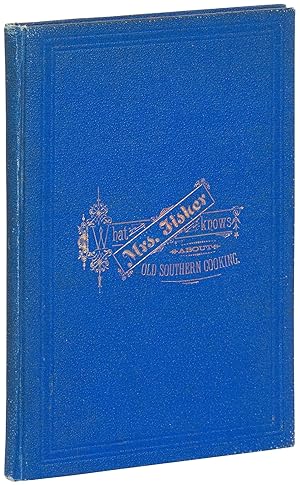
![Image du vendeur pour [DUCHESSE DE BERRY] The History of The Royal Residences of Windsor Castle, St. Jame's Palace, Carlton House. . . mis en vente par Pingel Rare Books](https://pictures.abebooks.com/inventory/md/md31371817075.jpg)
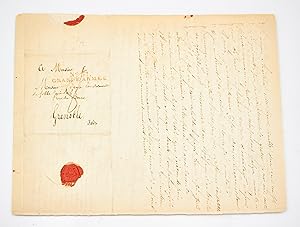
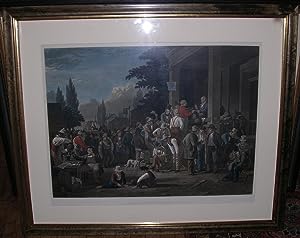
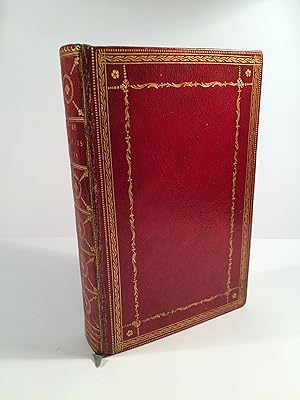
![Image du vendeur pour Neues Saltzburgisches Koch-Buch, für hochfürstliche und andere vornehme Höfe, Closter, Herren-Hauser, Hof- und Hauss-Meister, Koch und Einkäuffer; wie auch fur einschichtige, gesund und krancke Persohnen, nicht allein zu Hauss, sondern auch im Feld. Mit mehr dann 2500. Speisen, und 318. in schönen Kupffergestochenen Formen [.]. Bestehend aus 4. Theilen, in 8. Büchern eingetheilt bey deren jeden ein doppelt Register mit angehänget. mis en vente par Versandantiquariat Wolfgang Friebes](https://pictures.abebooks.com/inventory/md/md31137419712.jpg)
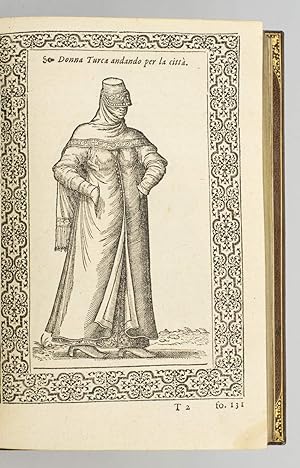
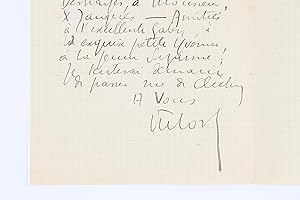
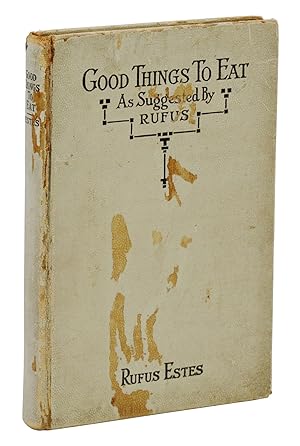
![Image du vendeur pour Les Diners de Gala [The Dali Cookbook] mis en vente par Manhattan Rare Book Company, ABAA, ILAB](https://pictures.abebooks.com/inventory/md/md31514140993.jpg)
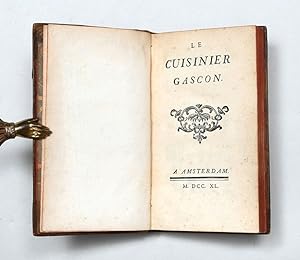
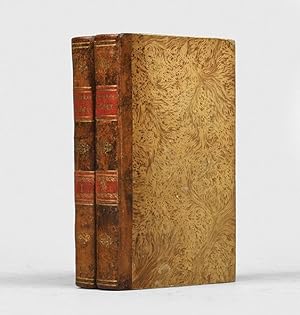
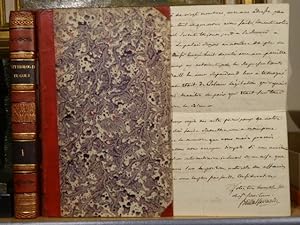
![Image du vendeur pour Opera di M. Bartolomeo Scappi, cuoco secreto di Papa Pio Quinto divisa in sei libri [bound with] Il Trinciante mis en vente par Pazzo Books](https://pictures.abebooks.com/inventory/md/md31695695990.jpg)
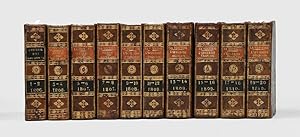
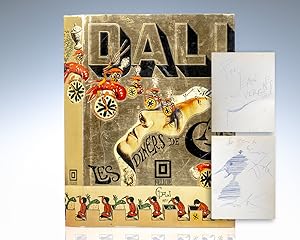
![Image du vendeur pour SetsuyÅ ryÅ ri taizen ç ç" æ ç 大å [or] Toryu setsuyÅ ryÅ ri taizen ç æµ ç ç" æ ç 大å [Complete Manual of Cuisine of Our School] mis en vente par Jonathan A. Hill, Bookseller Inc.](https://pictures.abebooks.com/inventory/md/md31016548183.jpg)
![Image du vendeur pour Gulf City Cook Book [Cookbook] [FIRST APPEARANCE OF JAMBALAYA] mis en vente par Babylon Revisited Rare Books](https://pictures.abebooks.com/inventory/md/md31810088168.jpg)
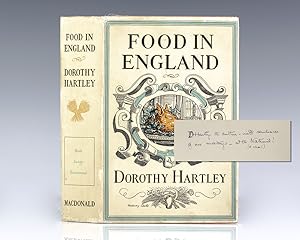
![Image du vendeur pour Daikon isshiki ryÅ ri himitsubako 大æ ä å¼ æ ç ç§ å ç®± [Comprehensive Secret Digest of Exceptional Radish Dishes] mis en vente par Jonathan A. Hill, Bookseller Inc.](https://pictures.abebooks.com/inventory/md/md31727491716.jpg)
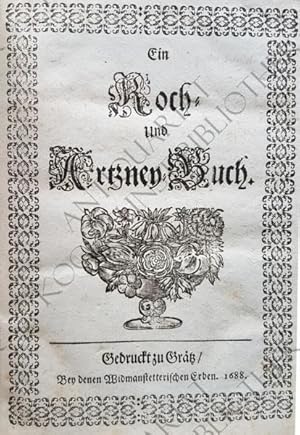
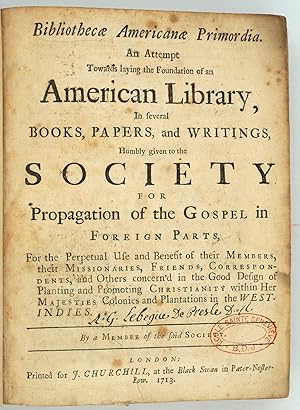
![Image du vendeur pour [CURIOSA - EROTICA - DESSINS ORIGINAUX] 12 dessins originaux érotiques à l'encre et à l'aquarelle (taille variable - voir détail ci-dessous). mis en vente par Librairie L'amour qui bouquine](https://pictures.abebooks.com/inventory/md/md31239930478.jpg)

